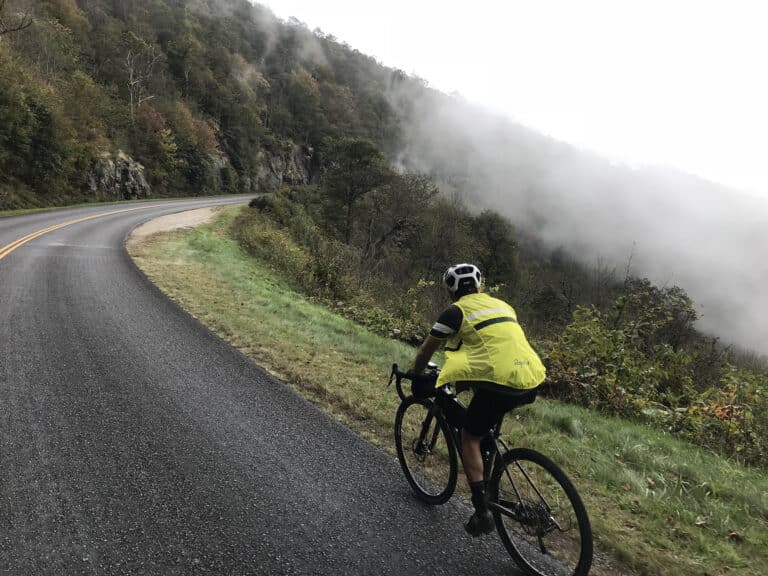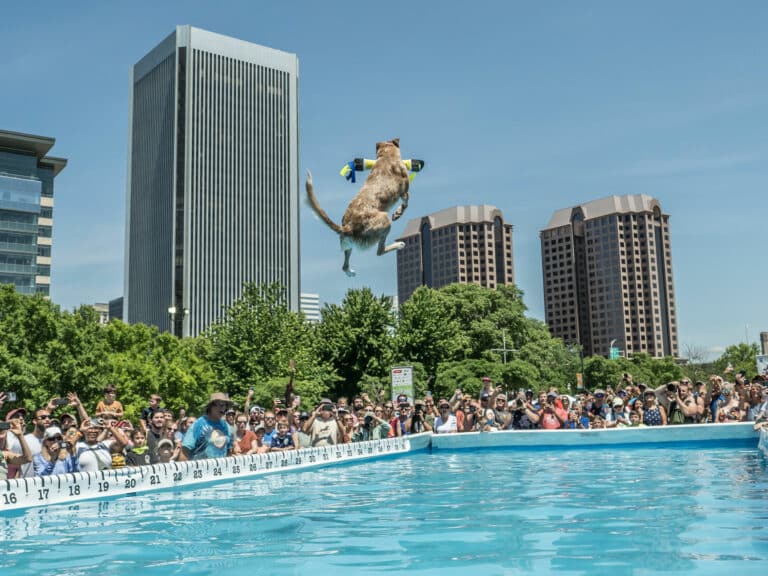Photo by Alan Leisersan
Should you find yourself near Atlanta on a lazy spring afternoon lounging beneath the shade of a loblolly pine, don’t be surprised if you look up into the branches to see someone standing there. It’s probably Peter Jenkins, also known as “Treeman,” and he’s probably tree surfing. No, I didn’t make that up. But yes. Jenkins did.
Jenkins isn’t your normal tree-hugging type. The father of recreational tree climbing, he’s embraced every aspect of tree climbing, from the biology of trees to the science of removing them. This love took root at an early age. Free time as a youth was largely spent in the boughs of a hackberry tree outside his home in Dallas, Texas.
“It was my safe haven,” Jenkins remembers. “My parents got so used to me climbing that if I was missing, they’d quit looking in the front yard and start looking up.”
Jenkins carried that love of heights with him when he left the Midwest for Estes Park, Colo., where he spent his summers rock climbing out West. When he moved east to Atlanta (a “very safe place for hippies” in the ’70s, according to Jenkins), the novelty of rock climbing wore off and was replaced with that childhood yearning to be one with the trees.
“It’s a more personal relationship,” Jenkins says on being up in the canopy. “It’s like being close to somebody.”
But in the late ’70s and early ’80s, nobody was climbing trees for fun, at least not adults. In fact, recreational tree climbing as it exists today wasn’t even a thing back then. Jenkins didn’t let that stop him. He became an arborist in 1979, professionally working on trees for 25 years to support his passion for introducing others to the world of tree climbing.
In 1983, he bought a plot of land outside of Atlanta. It was home to two great white oaks, which Jenkins would later name Nimrod and Dianna, and it was here that Jenkins finally got the sign he was looking for, the “message from the other world” he needed to begin developing recreational tree climbing. That message came in the form of thundersnow.
“I was sixty feet up in Nimrod, and it was snowing big, wet snowflakes about the size of quarters,” Jenkins remembers. “It looked like pieces of tissue paper falling.”
The view was so serenely beautiful that Jenkins started thinking about what it would have been like had there been somebody else up in the tree to share the moment with. All of a sudden, everything flashed bright white followed by the rumble of thunder in the distance.
“When lightning’s around, you really don’t want to be in the tree,” Jenkins says, chuckling now at his good fortune. “I made a very hasty retreat but I was shaken up.”
As Jenkins walked away from the tree, he again thought back to what it would have been like to share that experience with someone else, and again, a clap of thundersnow struck nearby. For Jenkins, that was all the affirmation he needed. Tree Climbers International (TCI) was born not long after.
“I just started dragging people out to climb trees. I didn’t charge anyone for 10 years. It was like my science laboratory.”
Now, over three decades later, you’d be hard-pressed to meet a tree climber in the Southeast (or anywhere in the world for that matter) who didn’t get trained under Jenkins’ guidance. He’s created safety standards, a training video, recreational and tree worker programs, even reading material on all-things tree climbing. He’s climbed trees all over, setting a personal record by scaling a 357-foot-high coastal redwood nearly three times the size of most white oaks in the East.
“I would not call [tree climbing] an extreme sport,” Jenkins says. “It’s actually very peaceful, like a coming home experience.”
One of Jenkins protégés is 63-year-old retired attorney Alan Leiserson, “One of the things I really love about tree climbing is it gives you a different view of the space that you’re in,” he says. “I like to think of it as understanding better how the tree sees the world.”
For Jenkins, learning to understand the trees is something he strives to instill in every student and client who comes under his guidance.
“When people have a personal connection to something, they want to protect it because they value it,” he says. “I want that same mindset to cross over into tree climbing.”
Is tree climbing dangerous?
All outdoor sports come with an inherent risk, but recreational tree climbing—as taught by TCI— has not seen a single serious injury or death worldwide in its 32 years of existence.
Does tree climbing damage the tree?
No. Jenkins’ standards for tree climbing do not involve the use of bolts, anchors, or crampons of any type. The process of ascending and descending trees utilizes a rope, a Blake’s hitch, and a cambium saver, a leather sleeve that not only protects the branch and rope but also allows for the rope to slide smoothly over the bark.
Where can I climb in the South?
Tree Climbers International
Atlanta, Ga., treeclimbing.com
Tree Climbing South Georgia
Macon, Ga., treeclimbingsga.org
Panola Mountain State Park
Stockbridge, Ga.
Tree Trek
Cumming, Ga., treetrek.net
EarthJoy
Alexandria, Ky. climbtreeswithearthjoy.com
Tree For All
Roswell, Ga., funintrees.com
Tree Climbing Planet
Nashville, Tenn., treeclimbingplanet.com
Blue Ridge Tree Climbing
Meadows of Dan, Va. blueridgetreeclimbing.com
Canopy Climbers
Gainesville, Fla., canopyclimbers.com








